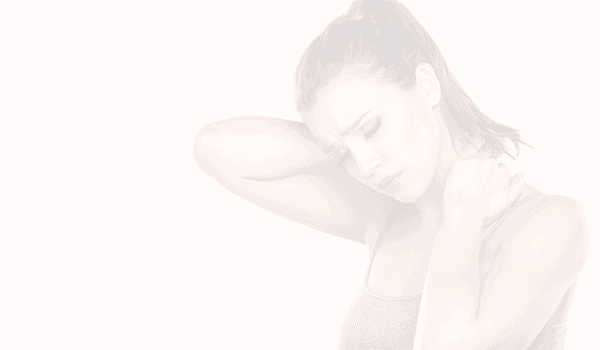Pain in the upper back can range from annoying to downright debilitating.
Working from home, or at least having to do a lot more work on a device or being less mobile, has taken its’ toll on our bodies.
If you spend a lot of time sitting, or looking downwards at a device, such as if you are working at a desk or computer, or studying or gaming, or feeding a baby, you may feel quite stiff, painful and sore in the upper back and shoulders. Or you may have had a fall or accident to your chest or back, resulting in some kind of pain in this region. If so, this post will give you some insight as to why you may be feeling this way, the possible causes of your pain, and options of what you can do to alleviate this pain, depending on the cause.

Manage pain in the upper back by understanding:
Structure and Anatomy of the Upper Back
Possible Causes of Upper Back Pain
Ways to Manage Upper Back Pain Yourself
How to seek help to reduce upper back pain
Structures of the Upper Back that can lead to Pain
Think of the backbone, or spine, as a stack of blocks, separated by cushions of spinal discs between each of the bones. This backbone forms the framework for the rest of the skeleton to branch off from. Each “block” is called a vertebra, and they have bits of bone sticking out of them known as processes – the horizontal projections are called transverse processes, whilst the knobbly ones you can feel as you run your fingers down your backbone are called the spinous processes.
The upper back is known to health providers as the thoracic spine – the part of the backbone that has ribs attached to it.
The ribs form a protective cage around the vital organs of the body, such as the heart, lungs, kidneys and stomach.
To protect these soft but vital body parts, and because the ribs block each vertebra from rotating or side bending, the upper back does not twist as much as the neck.
Although movement in this part of the spine is quite limited, It is still very important for body movement, as it connects the neck to the lower part of the body. So lack of any movement that normally occurs in this part of your back will then have an effect on either the neck or your low back, or both.
With each shoulder blade (otherwise known as the scapula) floating’ on the the ribs, and the ribs then attaching to the upper back, the position and movement of this part of the back can then affect the forces and movement available to the shoulder,
So pain or stiffness can lead to pain in these other areas, or pain or stiffness in these areas may result in soreness or pain in the upper back. Either way, you may end up with poor posture or mobility over time, finding it difficult to do some of the activities that were previously enjoyable and easy.
Often movement or pain issues in the shoulder can influence the upper back, and vice versa.
There are a pair of spinal nerves branching off the sides of spinal cord at each level of vertebra. These nerves track down between each rib to supply their corresponding portion on the chest wall. if a nerve is irritated or inflamed at the spine, it may be experienced as pain in the corresponding region supplied by that nerve, and will feel like a strip of pain running obliquely down and out from the spine, sometimes wrapping around to the side and front of the chest.
At other times, the pain may be felt as a “patch” of pain in the front, side or back of the chest. This may be due to pain being referred from a joint in the upper back, either where the rib meets the vertebrae or where the process of one vertebrae joins to the process of the vertebrae above or below.
Thin layers of muscle cover the ribs and may attach parts of the spine to other parts to cause movement of the neck or back, or may attach to the shoulder blades to enable movement of the blades and therefore movement at the shoulder. Excessive tightness, weakness or overactivity may result in various pain or stiffness issues, including postural problems, such as forward neck posture or hunched shoulders, shoulder impingement, muscle imbalances leading to hamstring injuries, sacroiliac joint dysfunction and nerve-related conditions such as thoracic outlet syndrome. For instance, if the muscles attaching to the shoulder blades aren’t functioning properly, or the nerve that activates these muscles is not working correctly, you can end up with “scapula winging” where the shoulder blades stick out.
Causes of Pain in the Upper Back
here are plenty of reasons for backache.
THere are different ways of categorising the causes of spinal pain, ranging from the underlying situations that have led to the problem (eg. Mechanical vs inflammatory) , to the anatomical structures giving rise to the pain (medical or biological model of pain), to looking at the ways that the body, mind and social environment are contributing to the pain (biopsychosocial approach). A careful history is very important to rule out any major problem.
In young people, a sedentary lifestyle, trauma, smoking habits and -or a lack of nutrition can be underlying factors contributing to back pain. Older people more often experience pain from fractures, wear and tear of joints and nutritional deficiency.
A useful way of understanding back pain can be gained by putting the causes of the pain into various groups such as those listed below:
- INJURY
Musculoskeletal back injuries such as sprains and fractures can cause either short-lived or chronic pain.
Sprains are tears in the ligaments that support the spine, and they can occur from twisting or lifting improperly.
Strains are muscle injuries resulting from overstretching, overactivity (repetitive or sustained) or excessive force exerted or applied to the muscles.
Fractured vertebrae are often the result of osteoporosis, a problem with bone architecture.
Less commonly, back pain may arise from accidents or falls that damage the abovementioned structures.
2.MECHANICAL PROBLEMS
A mechanical problem is a problem with the way your spine moves or the way you feel when you move your spine in certain ways.
Intervertebral disc degeneration – the discs, which act as fluid-filled cushions between the vertebrae of the spine, are deconditioning with age. As they deteriorate, they lose their cushioning ability, and the bones and cartilage that lines the bones then bear much of the stress of bearing the body’s weight and movement, which can lead to pain and/ or disability.
Ruptured discs, which are also called herniated discs- may put pressure or inflame nerve tissue or other pain-sensitive structures.
Muscle spasms or tension- which can be painful in themselves, or cause imbalances of positioning or forces within or around the spine that then lead to pain, such as tightening of your upper traps and impingement of the nerve in the space above the shoulder blade (the suprascapular space.)
Degeneration of the facet joints of the vertebra – shrinking the space between these joints will lead to less room for the nerve roots to pass and they can become compressed, or the underlying bony surfaces of joints themselves may be painful
Scar tissue – may also influence the way the body moves, by acting like glue to “stick together” structures that are supposed to move, and therefore leads to poor movement patterns that cause pressure or tension in some areas and weakening or stress on other regions that can lead to further tissue damage.
Referred pain- Poor positioning or movement patterns may put squash or stretch nerve tissue. Eg. tension on the nerves that pass above the scapula and can also cause pain in the arm or numbness and pins and needles.
3.ACQUIRED CONDITIONS AND DISEASES:
Back pain can also result from various medical conditions or diseases. This may include:
Scoliosis, a abnormal curvature of the spine where the spine is not straight (when viewed from behind)
Spondylolisthesis; various forms of arthritis, including osteoarthritis, rheumatoid arthritis, and ankylosing spondylitis; and spinal stenosis, a narrowing of the spinal column that puts pressure on the spinal cord and nerves. Other causes of back pain include pregnancy; kidney stones or infections; endometriosis, which is the buildup of uterine tissue in places outside the uterus; and fibromyalgia, a condition of widespread muscle pain and fatigue.
4.INFECTIONS AND TUMORS:
Any swelling or infection can impact on body tissues and cause pressure or tension on other structures, resulting in discomfort or pain.
Although they are not common causes of back pain, pain in the upper back may be a result of:
Osteomyelitis- infections involve the vertebrae,
DIscitis – Inflammation of the discs between the vertebrae
Shingles – a viral condition in a spinal nerve, that leads to sharp, often burning pain that follows the pattern of that nerve’s supply to the skin. In the upper back, it is often experienced as a band of pain that tracks in a path that follows the line of the ribs.
Cancer – also a relatively rare causes of back pain, a tumor present on the spine may compress and cause pain, or may occur in the bones of the spine itself and may or may not cause pain.
Ways to Manage Upper Back Pain Yourself
SPEED UP INJURY RECOVERY
If your pain in the upper back has been the result of a recent injury, you need to apply the basic principles of first aid, and then apply the following suggestions:
CHANGE YOUR POSTURE BY CHANGING YOUR ENVIRONMENT
you can change the position and alignment of your spine without much conscious effort by changing the influences on your body. This can include
- FOOTWEAR
- FURNITURE
- CUSHIONING AND SUPPORTS IN FURNITURE AND FOOTWEAR
- ROUTINES – TIMING, DURATION AND FREQUENCY of VARIOUS ACTIVITIES
CHANGE YOUR MOVEMENT PATTERNS AND POSTURE BY CHANGING YOUR BODY
- STRETCHING
- STRENGTHENING
- ENDURANCE CAPACITY
- BODY WEIGHT
- BREATHING
CHANGE YOUR MINDSET
- RELAXATION
- TIMETABLING & ROUTINES
- BREATHING
- PERCEPTIONS
- SUPPORT STRUCTURES
GETTING HELP WITH PAIN IN THE UPPER BACK
WHAT SORT OF HELP?
WHO SHOULD I SEEK?
WHEN SHOULD I START TO SEEK HELP RATHER THAN SELF MANAGE.

